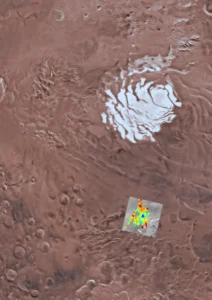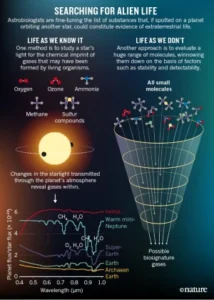Introduction:
The tantalizing prospect of discovering extraterrestrial life has captivated the human imagination for centuries. As our technological capabilities advance and our understanding of the cosmos deepens, the dream of finding alien life becomes increasingly plausible. With the highly anticipated Mars mission scheduled for 2024, humanity stands on the brink of a new era in space exploration—one that holds the promise of answering age-old questions about our place in the universe.
Exploring the possibility of finding alien life has always captivated the human imagination. The idea of life beyond Earth has fueled countless movies, books, and scientific endeavors. While the search for extraterrestrial life has been ongoing for decades, recent advancements in technology and space exploration have brought us closer than ever to uncovering the truth. With the upcoming Mars mission in 2024, the excitement and anticipation have reached new heights. In this article, we will explore seven signs that indicate we are on the cusp of finding alien life.
1. Water on Mars and alien life

One of the key requirements for life as we know it is the presence of water. Over the years, scientists have discovered compelling evidence of liquid water on Mars. The existence of ancient riverbeds, polar ice caps, and subsurface reservoirs strongly suggests that Mars was once a wet planet. The presence of water increases the chances of finding microbial life or the remnants of past life on the red planet.
2. Organic Compounds and alien life
Organic compounds are the building blocks of life. Recent discoveries by the Curiosity rover and the Mars Reconnaissance Orbiter have revealed the presence of complex organic molecules on Mars. These molecules, including carbon-based compounds, provide further evidence that Mars may have the necessary ingredients for life.
3. Methane Detection and alien life

Methane is another crucial indicator of potential life on Mars. On Earth, methane is produced by both biological and geological processes. The detection of methane in the Martian atmosphere by the Curiosity rover and the European Space Agency’s Mars Express mission has sparked great interest. While the exact source of methane on Mars is still unknown, it could potentially be a sign of microbial life.
4. Subsurface Habitability
The harsh surface conditions of Mars make it unlikely for complex life forms to exist. However, beneath the surface lies a different story. Recent studies suggest that the subsurface of Mars may offer a more habitable environment, shielded from radiation and extreme temperatures. The discovery of liquid water beneath the ice caps and the potential for underground aquifers opens up the possibility of finding microbial life in these hidden pockets.
5. Extremophiles on Earth and alien life
Earth is teeming with life in the most extreme environments, known as extremophiles. These organisms have adapted to survive in conditions that were once considered uninhabitable. Studying extremophiles has provided valuable insights into the potential for life on other planets. By understanding how life can thrive in extreme environments on Earth, scientists can better identify and explore similar environments on Mars.
6. Enceladus and Europa
While Mars has been the primary focus of our search for alien life, other celestial bodies in our solar system have also shown promising signs. Saturn’s moon Enceladus and Jupiter’s moon Europa have both been identified as potential candidates for harboring life. The presence of subsurface oceans and geothermal activity on these moons provides a conducive environment for the existence of microbial life.
7. Technological Advancements
Advancements in technology have revolutionized our ability to explore space and search for extraterrestrial life. The development of more sophisticated telescopes, rovers, and spacecraft has significantly enhanced our capabilities. From the James Webb Space Telescope to the upcoming Mars mission in 2024, these technological advancements are bringing us closer to finding answers to one of humanity’s most profound questions.
In conclusion, the signs indicating our proximity to finding alien life are mounting. The presence of water, organic compounds, and methane on Mars, along with the potential habitability of its subsurface, all point to the possibility of microbial life. Additionally, the study of extremophiles on Earth and the exploration of other celestial bodies like Enceladus and Europa further fuel our optimism. With each technological breakthrough, we are inching closer to unraveling the mysteries of the universe and discovering if we are truly alone. The Mars mission in 2024 holds great promise and may be the catalyst that finally brings us face to face with the existence of alien life.

